she/her, artist and trash crafter. no commissions at the moment
Last active 60 minutes ago
Don't wanna be here? Send us removal request.
Text
My players are about to break into the Shadow-Stealer's Hut, hoping to steal some Hoojin masks from his hoard so they can sneak into Rave, the mysterious city of thieves. I've sculpted up some miniatures for the occasion:

Here's a close-up of The Shadow-Stealer - a horrible centipede that steals people's shadows and makes them into masks:
This model was sculpted with fimo professional and greenstuff - it took eight bakes in the oven to complete.
Next up, we have The Sniveling Snitch, the Shadow-Stealer's wretched pet/lackey:



This one was inspired by Plastiboo's excellent work, kitbashed from a goblin head and a re-posed skeleton. The birdcage and lock made from wire and greenstuff. He only speaks from the face on the lock, popping out of small trapdoors in the ceiling to spy and tattle on intruders. I plan on lowering him down on a chain from behind the GM screen!
Finally, we have the animated cauldron:
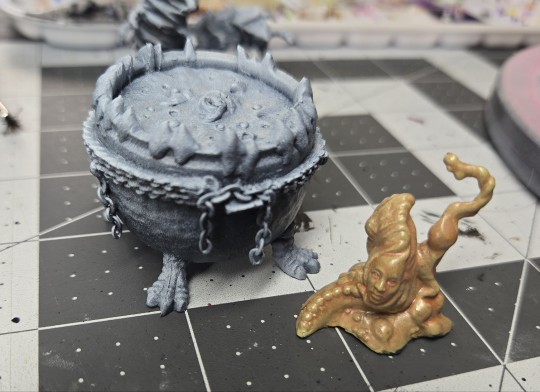
The top is a warhammer bit I found at a charity event, the rest is put together with clay, bits of chain, and feet from some cheap dinosaur toys. The cauldron can be befriended. The slime inside (a repurposed Dreamblade model), however, cannot.
15 notes
·
View notes
Text
Smuggler's Cave
I designed this map as part of a megadungeon set in a whimsical otherworld: Tucked away in a hidden cove beneath a giant rotten stump is Smuggler's Cave, the hideout of the Pirate Koi terrorizing the Dreaming Marshes. Players can infiltrate their base and free the prisoners through multiple routes - rowing in through the front entrance, possibly impersonating allies of the smugglers, sneaking through behind the waterfall, or beneath the roots of a mystical mangrove tree in the bayou. From there, they'll be fighting/avoiding pirate patrols across rickety walkways and underground beaches, crawling through pipes into the ship sticking out of the cliffside, and figuring out the how to deal with the crow's nest lookout. If negotiations with the pirate captain goes south, they may even find themselves flushed down into the waterlogged grotto where the previous gollum-esque captain still lurks.
Hoping to get it printed out and the second level stuck on some foamboard!
Level 2

Level 1
With and without secrets:


Feel free to use non-commercially for your own pirate adventures!
Edit: replaced the maps with better optimization.
21 notes
·
View notes
Text
Haven't posted in a while, busy working on a megadungeon, which is mainly writing, mapmaking, etc.
Here's some in-progress snaps of the Ragpicker Patrol, a crew of petty thieves and scavengers living in the trash heap of a goblin city:


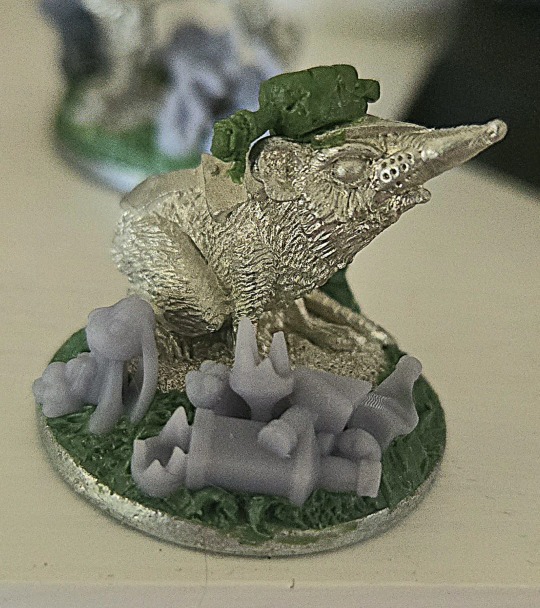
Will hopefully get em all primed and zenithaled for pictures later.
1 note
·
View note
Text
I love Pf2e but the stealth system across phases is so poorly explained (even in the remaster!) that to this day people are still giving a million and one different answers for running it RAW.
This isn't an ask for people to explain it to me (I *think* I've figured it out what makes sense with all the feats - but who tf knows the actual intended procedure by the devs), its more an observation of the discussions surrounding it online. If your system has this amount of miscommunication and disagreement over something so basic, there's probably some updates needed to the rulebook. Some clarification on Search exploration activity vis a vis creatures, initiative, and transitioning to encounter mode would have saved a lot of headache.
The only reason it doesn't come up more imo is because no one bothers with the exploration phase, which is a big shame.
1 note
·
View note
Text
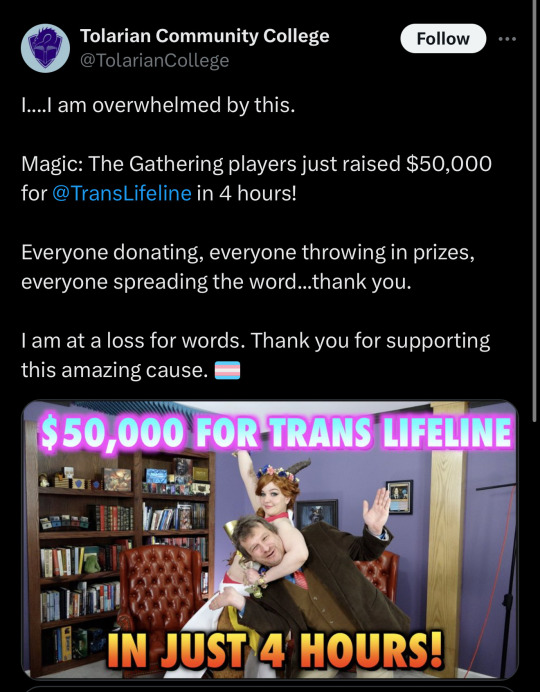
Idk if yall saw this, but Magic The Gatering YouTuber Tolarian Community College just raised 50,000 dollars for trans lifeline in like 4 hours, and that number is still going up really fast.
This is such an incredible show of support from the TCG community, and it’s especially nice to see considering that so many of us (transgender people) are a part of various TCG communities.
https://give.translifeline.org/campaign/tolarian-community-college-trans-lifeline-2025-fundraiser/c658047
6K notes
·
View notes
Text
This might be a longshot, but does anyone have rec's or tips on non-metallic metals? I'm painting a knight and metallics are still a place I want to improve
2 notes
·
View notes
Text
Some addendums - I wanted to highlight (heh) the fun shading I've been learning to do - to emphasize the lighting from the lantern, I blended between hardened leather and ochre clay on the coat, and made the colors warmer near the light source. The speedpaints blend really nicely - I apply it in 1:10 SP to medium ratio as glazes over values and undershades. Here it is with the lantern turned off:

Also, it's funny - this guy was one of the first minis I ever made from scratch - I think I've come a long way since I was playing with masking tape and hot glue 😆


"Hello little one... are you lost?"
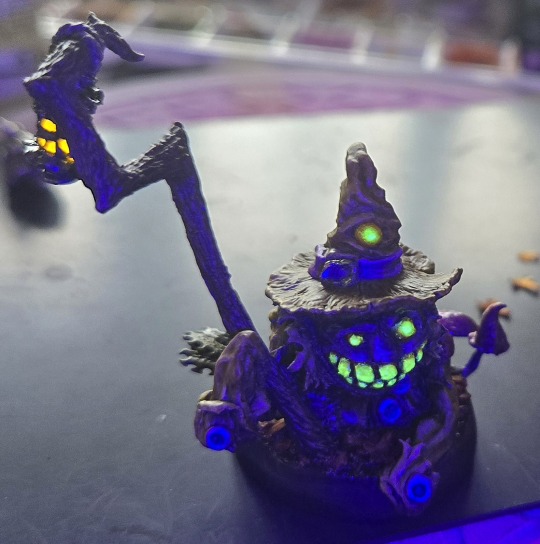

Finished my very trustworthy and helpful forest guide miniature - he's here to help!
His lantern lights up and flickers, and his eyes and teeth flouresce under a blacklight. I'm so happy with how he came out! I did the electronics, sculpting, and painting myself ^_^


#my stuff#miniatures#ttrpg art#art#crafting#ttrpg#miniature painting#miniature sculpture#halloween#goblins#dungeons and dragons
73 notes
·
View notes
Text
"Hello little one... are you lost?"


Finished my very trustworthy and helpful forest guide miniature - he's here to help!
His lantern lights up and flickers, and his eyes and teeth flouresce under a blacklight. I'm so happy with how he came out! I did the electronics, sculpting, and painting myself ^_^


#my stuff#ttrpg art#miniatures#art#crafting#ttrpg#dungeons and dragons#miniature painting#miniature sculpture#halloween#goblins
73 notes
·
View notes
Text
Absolutely love this - such a cool idea executed well
Beyond this portal lies the promised mushroom lens, go forth my children!
3D print of one of Black Scroll games calling portals. All of the calling portal prints were designed to accommodate a cell phone to run an animation and on their site they have a bunch of animations you can put on your phone. I had a lot of fun painting this big project as it gave me a canvas to explore some more highlighting and glazing methods that I've been reluctant implement previously.


#calling portals#blackscrollgames#3d printing#painting miniatures#other people's art#miniature painting#mushroom lands
20 notes
·
View notes
Text
Finished my frog & turtle diorama - I couldn't be happier!



79 notes
·
View notes
Text
Sculpted a dirty tile floor test base for the little guys. The paintjob is a bit rougher than I like but I hope it is decent enough for this mini.



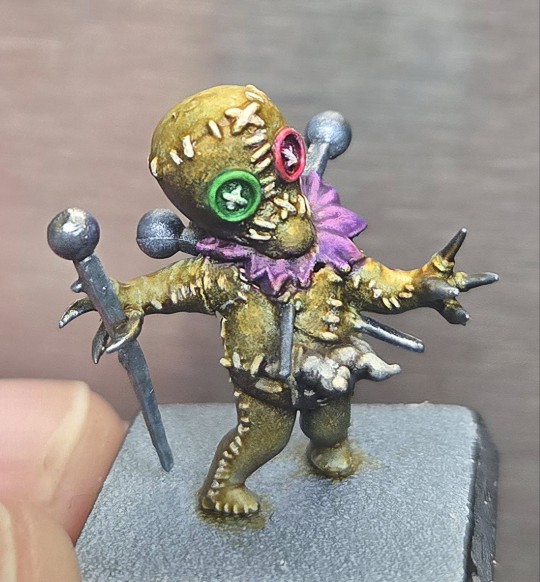



Some WIP haunted dolls - need to figure out some fun bases to give them. These are Malifaux miniatures, and were super fun to paint!
65 notes
·
View notes
Text
Was inspired by the haunted dolls I painted earlier and decided to sculpt my very first OC - the Runaway. She's a ragdoll trying her very best to survive the horrors. My younger self would be so happy right now ☺️

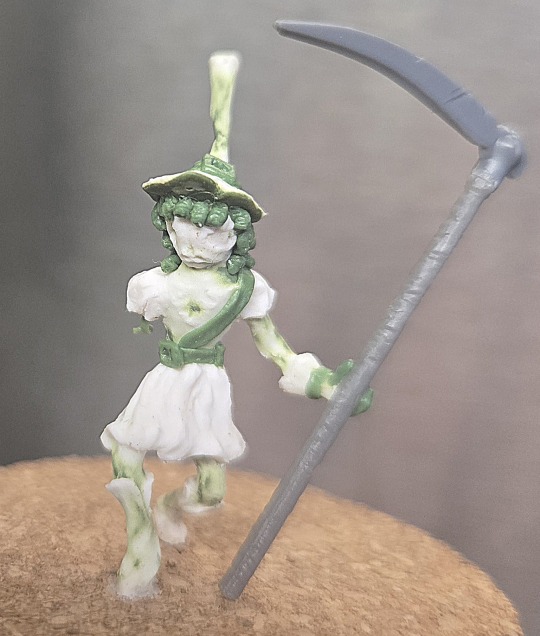
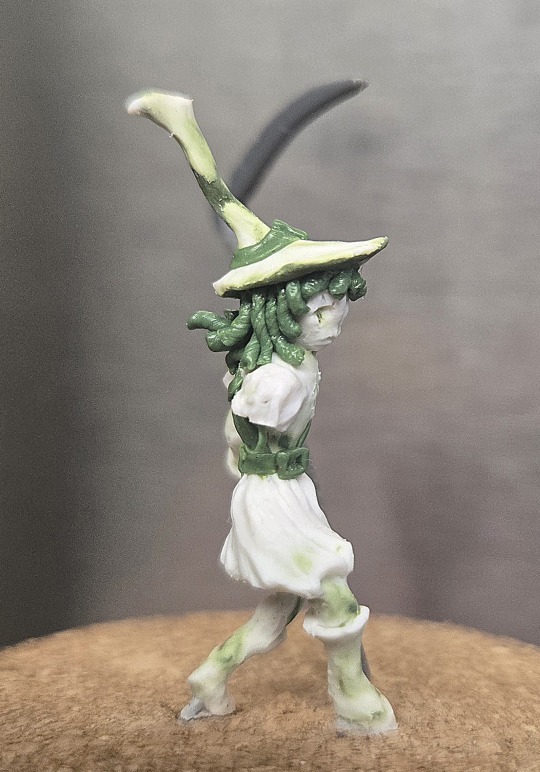

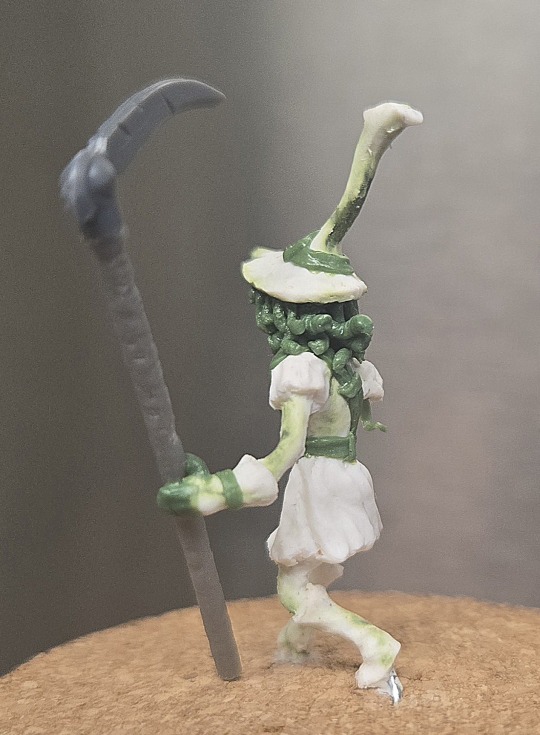
Done w/ fimo professional & greenstuff over a wire armature.
31 notes
·
View notes
Text
Beautiful technique on display, need to learn how to do fur like this
Working on writing for Elden Ring and miniature painting helps me distress after, we'll, everything. Working on a Caelid writeup right now.
In the meantime check out Ashan'Tyr from the Skirmish wargame Confrontation, by Rackham. Its a dead game admittedly but these models are nice.
I haven't played the game but I think she's pretty good.
She's my second attempt at NMM, and her fur I painted to be reminiscent of a doberman.
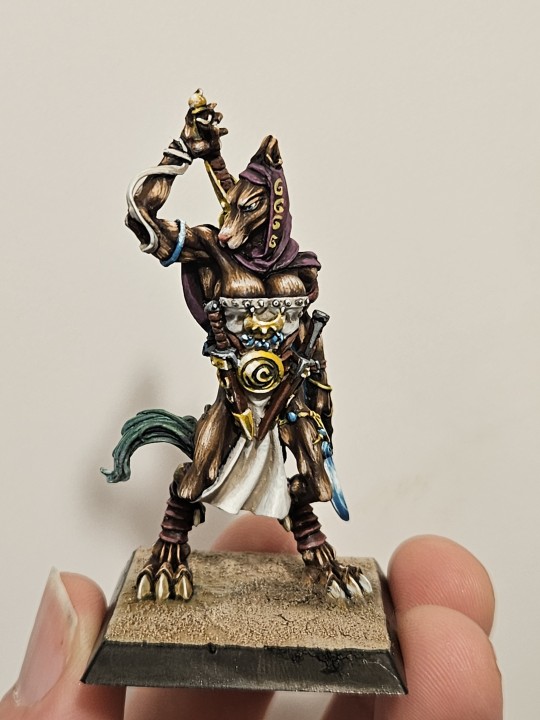

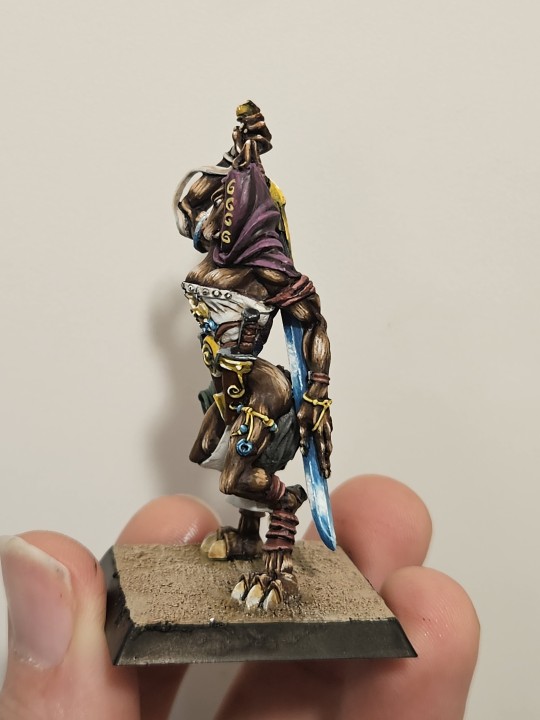

26 notes
·
View notes
Text






Some WIP haunted dolls - need to figure out some fun bases to give them. These are Malifaux miniatures, and were super fun to paint!
65 notes
·
View notes
Text

My frog wizard shattered halfway through painting, so I had to quickly find a new staff for him. Found this goblin frog bit and fixed him up.
He doesn't look as pretty as before, but this staff is so much more fitting to his character. He is unique, and reminds me of the Grand Negus. I would never have had the opportunity to say "Inconcievable!" in a burbly froggy accent had I not screwed up.
I think a lot of art is making mistakes and finding something new from the mess. Can't wait to finish painting this special boy!
79 notes
·
View notes
Text
The Prince of Thieves himself - a kitbash of a Dreamblade miniature (Thief of Last Chances). I gave him a hat from some Warhammer bits, and sculpted on a cape and rapier (that part was super difficult to do w/ greenstuff -_-'). I rebased him with a custom sculpt using fimo.
Follow on from the Hoojin Thieves I did earlier:
#ttrpg art#my stuff#miniatures#art#crafting#ttrpg#dungeons and dragons#miniature painting#dreamblade
6 notes
·
View notes
Text

Beware the crows of Hoojin Hollow, City of Thieves!
Painted almost entirely with inks & speedpaints over highlights & undershade, love how the values came out on these! 3D prints by Warp Miniatures (resin), bases sculpted by me using Fimo Professional.
Some close-ups:





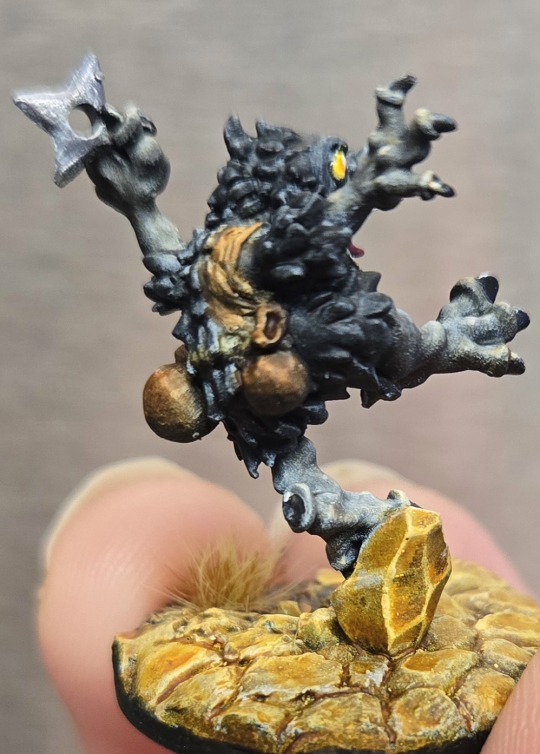


22 notes
·
View notes